Hampi, Pattadakal and Aihole
Large and diverse as our country is, it can claim to only 28 odd UNESCO world heritage sites. Hampi and Pattadakal are both on that exclusive list. The capital of the 15th century Vijaynagar empire, Hampi had a small but bright existence in India’s vast history (compared to some of our cities which span several millennia), with its rise and decline spanning scarcely 200 years. Yet in this small time, it became one of the biggest city in the world at its time, with half a million inhabitants, as traveler Nicholas Conti recorded during his visit to Hampi in 1420.
Hampi’s fortunes were linked to the Vijaynagar kingdom, which flourished between 1350 and 1565. They built their capital near present day Hospet in Northern Karnataka (10km from away) in a hostile-looking rocky landscape flanking the Tungabhadra river. Honestly, if I were looking for a spot to build my new capital, I’d have chosen someplace else, but the rocky landscape did provide natural defensive structures. The landscape can be best described as low lying hills completely covered with ochre colored rocks (granite) – much like sprinkles covering a cake.
The prosperity of Vijaynagar Empire fuelled the rapid expansion of Hampi in all directions – till the Raya dynasty was defeated and plundered by the combined forces of three Muslim kingdoms around it. The victors defaced most of the temples and soon the whole city was abandoned. And it remains like that today, crumbling and overgrown with reeds, spread over a huge area. Comparisons with the city of Angkor Thom in Cambodia are not completely unwarranted – both had brief but prosperous existence, then abandoned and now all that remains are impressive ruins. Angkor Thom precedes Hampi by a couple of centuries and the jungle had reclaimed much more of the city – Hampi had a drier climate and hence the vegetation around it is sparse.
We began our trip from Mumbai on the Chalukya Express. There is only one train which goes from Mumbai (actually Vasai Road and Kalyan) to Hospet direct – the Ajmer/Jodhpur Yeshwantpur Express. But we didn’t get tickets on it and there aren’t any good flight options. So the next option was to take the Chalukya Express to Hubli which we reached at 1pm, where we waited for 3 hours and then caught the connecting train to Hospet. The total travel time was 22 hours, which would be down to 15 hours if you can get tickets on the direct train.
Hospet offers a multitude of staying options, both in city proper and near Anegudi village, closer to the ruins. Hampi is a popular destination with foreigners, and hence the food scene is quite good – there are a lot of restaurants serving wood fired thin-crust pizzas and fairly good continental fare near the ruins. The city of Hospet itself offers more Indian options as well. We didn’t stay in hotels ourselves – we stayed with our relatives in the city, and were joined there by Suchi’s parents.
Hampi, being spread over a huge area of 40 sq km, is impossible to cover on foot, unless you are ready to spend a month in Hampi. However, not all of those 40 sq km are covered with ruins – they are dispersed amidst banana plantations and coconut groves. There is a lot to explore, various viewpoints atop hills and 2 days are needed to do justice to the place without tiring yourself too much. We had a tighter timeframe and covered as much as we could in one day itself. I think we covered most of the well-known structures, though it left us really drained out at the end of the day. We will list out the more impressive structures in the order of our visit
Vittala Temple
Located the furthest away from Hampi bazaar and the entrance to Hampi, Vittala temple is usually the last destination for most tourists. It is also the most beautiful and ornate of all structures left standing in Hampi – and hence the most crowded. Paying heed to advice from relatives, we made this our first stop for the day. And it is truly a magnificent temple. Granite being the most easily available building material, all of Hampi is built with it. However granite is not given to carving easily – hence most of the architecture in Hampi is not very ornate. But there are exceptions like this
Looking at the beautiful sculptures and ornate carvings, you would never have guessed granite can be fashioned so beautifully into mythological creatures. The Vittala temple is situated inside one big compound. The most recognizable structure in that complex (and Hampi’s trademark image) is the stone chariot. The other famous structure is the musical pillar hall. Each pillar in that musical hall produces the sound of a particular musical instrument when struck. We still dont understand how they made it, and you cant help but wonder at our glorious past.
Unfortunately, that hall was closed for renovation by the ASI when we visited.
The parking for the Vittala temple has been made almost 1.5 km away from the temple compound. You can take the walk if you wish or you can take a Rs 10 ride on one of the electric golf carts (don’t know what else to call them). Each golf cart can seat about 10 people and is fully staffed by women. Midway between the parking lot and the temple compound is the Pushkarni or the bath. All temples in Hampi have a pond for the people to take a bath before entering the temples. This particular Pushkarni is a rather pretty one and surrounded by photogenic cliffs. If you ask, the golf cart women will drop you at this bath and you can flag down the next cart when you are done
Riverside
Once you are done with the Vitthal temple, before you take the golf cart for your return, you can take a walk down to the Tungabhadra river. Just follow the road on the temple’s left and the riverbank is just 5 min away. On the way you can spot the King’s scales – a giant doorway sized arch from where a huge scales used to hang where the king would weigh himself with goodies which would be then distributed to his subjects on special days. Only the arch remains.
At the riverbank, there exist an old stone bridge across the river. In summer months, when the river is shallow, the bridge is usable. But in Sept, just after the rains, with the Tungabhadra in full spate, you could barely make out the bridge. It is a nice soothing spot to have a cup of tea, maybe munch on a few hot vadas and watch the river flow by. Also, do not get too close to the river – there are more than one signboard saying watch out for crocodiles !
Zenana Bath
Our next stop was the Zenana Bath. A smallish bath for royal ladies, as the name suggests, it was a surprisingly muslim-looking structure in Hampi. Perhaps a muslim nobleman’s contribution - we never quite figured it out. There is a lot of ugly graffiti on its walls, and not much sculpture – miss-able if you are short on time
Royal Enclosure
The royal enclosure on the top of a smallish hill consisted of the royal quarters – the palace, the darbar, the Mahanavami Dibba, the stepped well etc
The Mahanavami Dibba
A large platform where the King presided over processions etc. While the top is completely flat and bare, the sides of the platform are carved with soldiers, camels, horses and elephants. Standing atop the platform, one can get a good view of the entire royal enclosure.
The Queens Bath or Pushkarni
It is the royal enclosure where you can see the clever water and drain age system built by the Vijaynagar kings. And the queen bath is one of the visually most striking looking structures with its geometric step pattern. There is a small stone channel bringing fresh water from the river a km away. The steps are remarkably well preserved, though you aren’t allowed inside the bath
And I recently saw on tv, a stepped well in the Sun temple in Motera, Gujarat which had the exact same pattern
The palace itself was constructed of wood and hence nothing survives except the stone foundations. Of the darbar hall, only one portion remains, resembling today’s stadiums.
Hazara Rama temple
This temple, located a small distance away from the royal enclosure, was probably the royalty’s preferred temple. The temple gets its name from the stories from Ramayana carved all over its outside and the outer enclosure walls. It is fun to try and identify the sequences carved on the temple, but you have to be strong in your Ramayana.
The Underground Shiva Temple
Named so because it was built inside a low lying ditch, the temple roof is at the level of the surrounding ground, giving it an underground look. It is an uncharacteristically low temple dedicated to lord Shiva. Because of its low-lying structure, the entire floor of the temple was covered with standing water from the rains – and it stank badly. There isn’t much carving or sculpture on the temple, but is surrounded by a nice garden with green lawns
Lotus Mahal
From the royal enclosure, we moved to the ladies enclosure. Surrounded by high walls and with its own guard towers, the royal ladies of the Vijaynagar led a protected life. Three of the guard towers survive, and they are the most curiously shaped towers I have ever seen.
The Lotus Mahal is a small structure, again with a surprising Muslim architecture, which served as a summer palace for the royal ladies. The ladies enclosure is set in a pretty garden, and a lot of tourists rested their weary legs on the green grass. Apart from the Lotus Mahal, not much else survived - the actual palace was again made of wood and only the stone basement remains
Elephant Stables
Situated next to the ladies enclosure are the elephant stables. Accessible from the ladies enclosure via a small gate, the elephant stables are a row of 11 elephant shelters which have survived in very good condition. The interiors are huge, accommodating elephants in utmost comfort I am sure. They definitely put a Mumbai 1BHK to shame.
Ugra Narsimha statue
The “angry” Narasimha statue, as the name translates, is a 20ft high monolithic statue of the Narsimha avatar of Vishnu. The statue is missing its two palms, but otherwise is in good shape. There was supposed to be a smaller statue of Laxmi sitting on Narsimha’s knees, but that has fallen off and is now in some museum. To keep off pesky tourists, the enclosure has been padlocked, and you can only take a photo from a distance
Krishna temple
A temple dedicated to Krishna after one of the Raya kings came back victorious from a war against the Kalinga Empire. This is the only other temple which has a gopuram apart from the Virupaksha temple.
Virupaksha Temple
The other famous temple in Hampi – closest to the entrace to Hampi and the first one usually seen by tourists. Situated at one end of the Hampi bazaar, Virupaksha temple towers over the surroundings with its huge gopuram. It is the only temple in Hampi in which active puja still goes on. For history buffs like us, it is a little putting off as active temples invariably spoil the history of the temple. As feared, the stone sculptures inside the temple had been painted over and the ASI was hard at work scrubbing the paint off.
The other interesting part of the temple was the pinhole camera room. The makers of the temple had constructed a pin hole camera with a window, so that the inverted image of the gopuram can be clearly seen on the wall. When you consider it was done 800 years before, you appreciate it even more.
The Virupaksha temple is very close to the Tungabhadra river, where a ghat has been made for religious practices. Closeby are multiple restaurants offering continental food to tourists.
Achyut Raya Temple
The last (and my personal favorite) temple we checked was the Achyut Raya temple. Constructed by a king of the same name, this temple is a little difficult to get to, but because of its secluded location, gives a very Indian Jones feeling. There are two ways to approach the temple. One is from the direction of the river, upriver from the old Tungabhadra bridge. The other (and much more cooler path) is to walk towards the other end of the Hampi bazaar (away from Virupaksha temple) and towards the statue of Nandi. There are steps next to the Nandi statue climbing up the hill. Once you cross the hill, you can see Achyut Raya temple on the other side below.
Completely surrounded by hills and vegetation and without any other soul inside, it was my favorite temple in Hampi
And so finished our Hampi darshan. Have to strongly point out, this is in no way an exhaustive list of things to see in Hampi. We have not mentioned some things that we saw (like the two ganesha statues) and a lot of other things we couldn’t see.
Badami
While the Vijaynagar empire flourished 500 years ago, it wasn’t the only powerful kingdom in the region. About 1400 years back, in the 6th century AD, Chalukyas rose as a powerful kingdom in the Deccan. They had their capital in Badami, a small town about 100km from Hospet in North Karnataka. But what is of interest to us is was the cave temples they left behind in Badami
The Chalukyas carved 4 largish cave temples in the almond-colored sandstone, not very unlike the Elephanta caves in Bombay. However, the quality of craftsmanship is breathtaking and miles ahead of anything else. And you really thank providence (or whoever else is responsible) that they survived 1400 years with very little damage.
The first of the caves is dedicated to Shiva. Each of the caves have pillars at the entrance and then a second row of pillars after that, forming a sort of passageway. There are two statues carved at each end of the passageway. Each of the pillars are also decorated with smaller sculptures and sometimes the roofs also have carvings on them. The insides of the caves are relatively bare. The entrance is decorated with statues of Shiva - the most eye catching being the dancing Shiva statue. The 16-armed Shiva statue is said to cover all possible hand positions of the classical Bharatnatyam dance. It is truly amazing
The second and third cave are dedicated to Vishnu. The third cave seems to be a magnified version of the second cave, with both caves having statues of Varaha, Ram, Narsimha, Vamana and Narayan avatars of Vishnu. The finer details are still visible in most of the statues, and you cannot help but gape at these giant sculptures.
The fourth cave, constructed a little later, is dedicated to Jainism. The caves have statues of all the Jain Tirthankars carved into the walls. Compared to the first three caves, there are sculptures inside the cave as well
The caves overlook the blue green waters of a lake and across the lake, on a similar hill are the remains of the palace of the Chalukyas. Nothing much remains as the palace, which was again wooden. On the far side of the lake is the Bhootnath temple. Dedicated to lord Shiva, the location of the temple right on the shore is very idyllic and serene. If not for the paucity of time, one should definitely visit the temple too
Pattadakal
About 16 km from Badami lies Pattadakal, the other UNESCO World Heritage site. Before moving their capital to Badami, the Chalukyas had their capital in Pattadakal. Here they experimented with different temple styles, mixing features of Nagara and Dravdian temple architecture - till they finalized their own style. Pattadakal was their temple laboratory cum complex. Most of the temples at Pattadakal are situated very close to each other and Karnataka Tourism has also done its bit by laying beautiful green gardens all around the temples
Among the temples at Pattadakal, the Mallikaarjun temple and the Virupaksha temple are the most beautiful. The Pattadakal temples are marked by beautiful mythological carvings both inside and outside the temples. Each pillar inside the temples are covered with carvings depicting stories
Aihole
Aihole is another Chalukya temple laboratory site, which predates Pattadakal and shows even more different styles of temple making. The temples in Aihole are more spread out and take more time to cover. Since we were covered Badami, Pattadakal and Aihole all in the same day, we viewed only the biggest block of temples. There are many travelogues detailing different solitary temples in Aihole which are worth a visit
The Durga temple at Aihole is the most famous one and has a curious floorplan with a rectangle with semicircle at one end. It has a corridor running all around the temple and the walls are covered with depictions of all major gods.
The other interesting temple in that group of temples is the Lad Khan temple. Apart from the curious name, its construction is such that from a distance it looks like it has logs of wood lying on its roof – but its all stone
By this time we were dead tired and didn’t have energy to explore anymore of Aihole. So we retired to the comfortable (and very value-for-money rooms) of KTDC resort in Badami.
Bijapur
Out final stop before we caught our return train, was Bijapur
Where we visited the Gol Gumbaz. The huge dome itself is breathtaking, but the entire experience is ruined by screams of people trying to listen to the echoes. And on weekends, when the place is crawling with schoolchildren and their likes, the cacophony is instant-headache-inducing. The climb up to the dome itself is a little tricky as one has to climb through the narrow stairs of the minarets. The floors are much higher than your average apartment floor and the stair are so narrow that only one way traffic is possible, that too accompanied by frequent bumps to your head
But the climb is worth it. At the opposite corners of the dome, during momentary pauses in the screaming, carefully whispered words can be heard clearly by the other person across the dome.
After lunch in Bijapur, we caught a bus for Sholapur in Maharashtra. And in 3 hours we were in Sholapur. We caught the overnight train to Mumbai
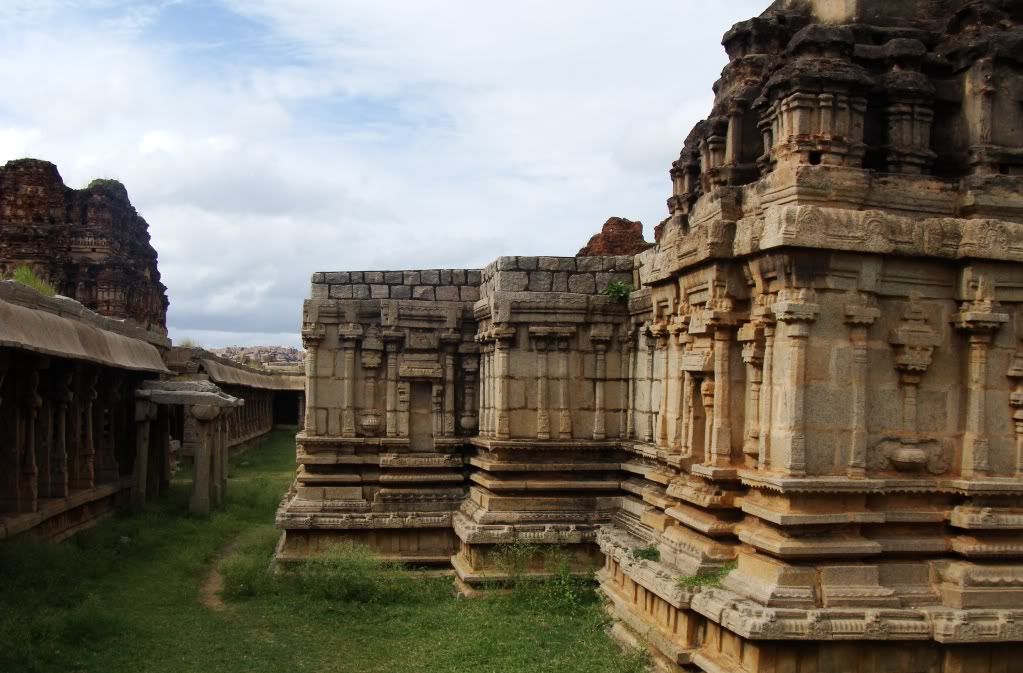
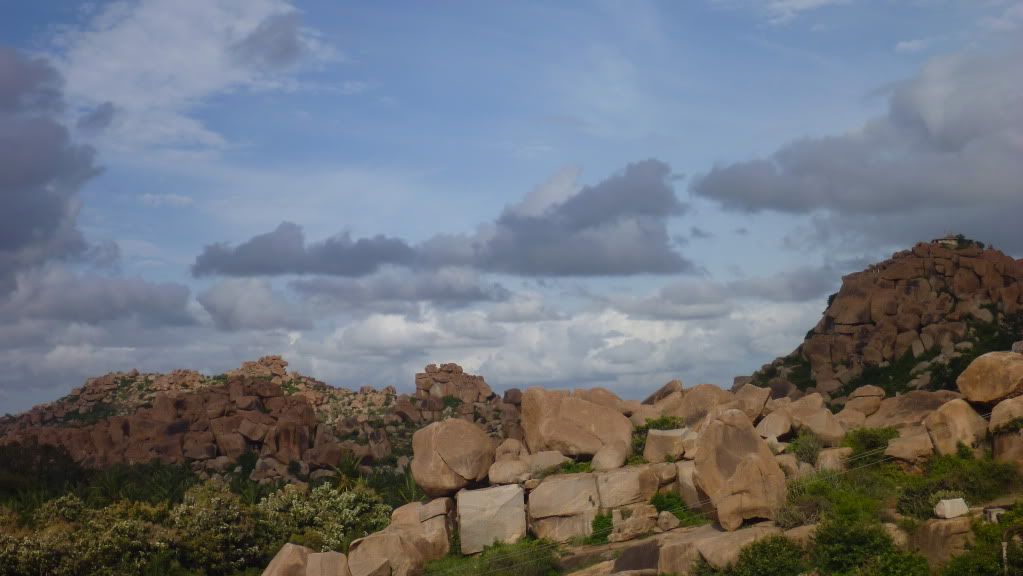
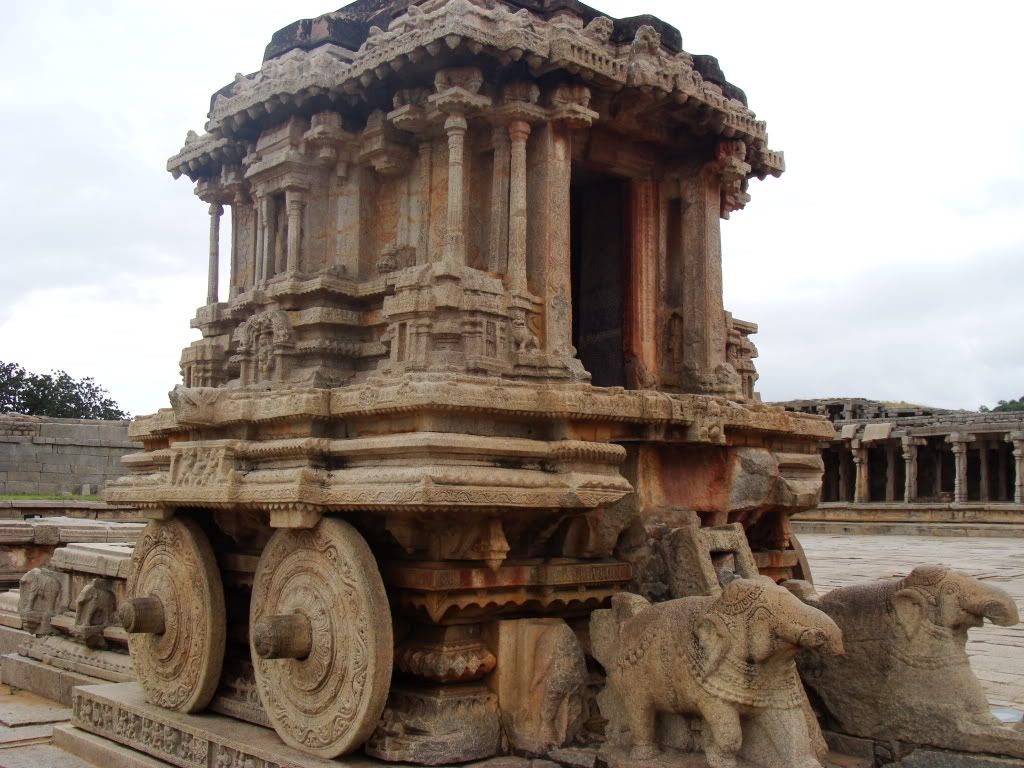

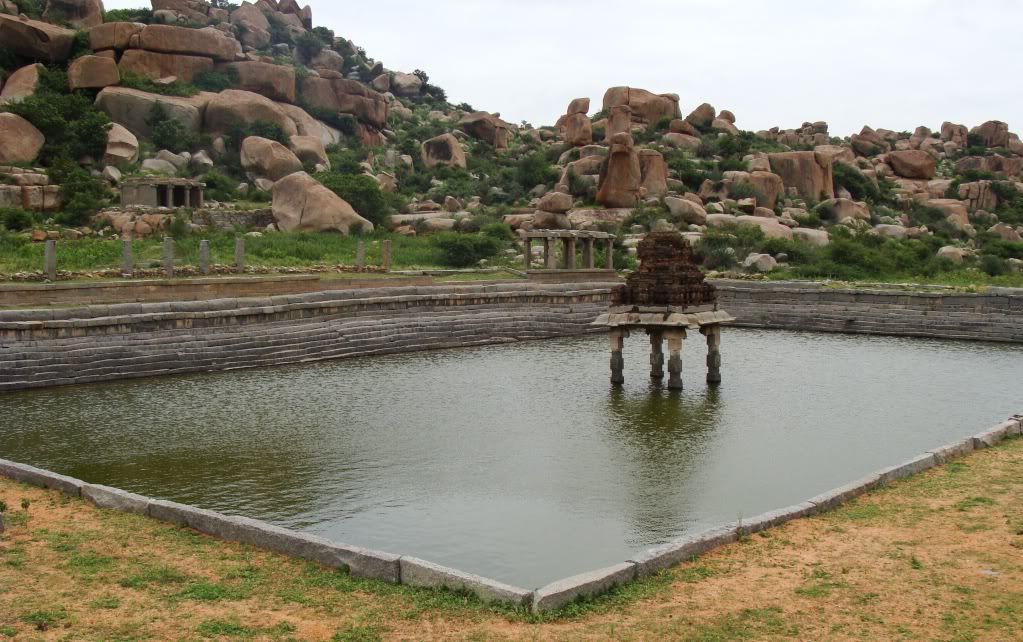
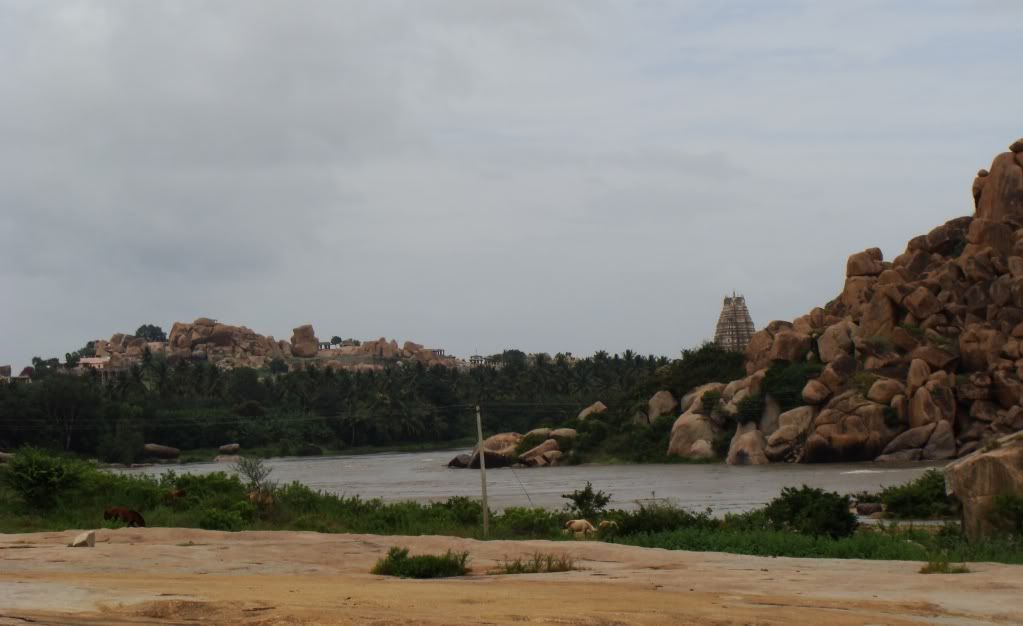
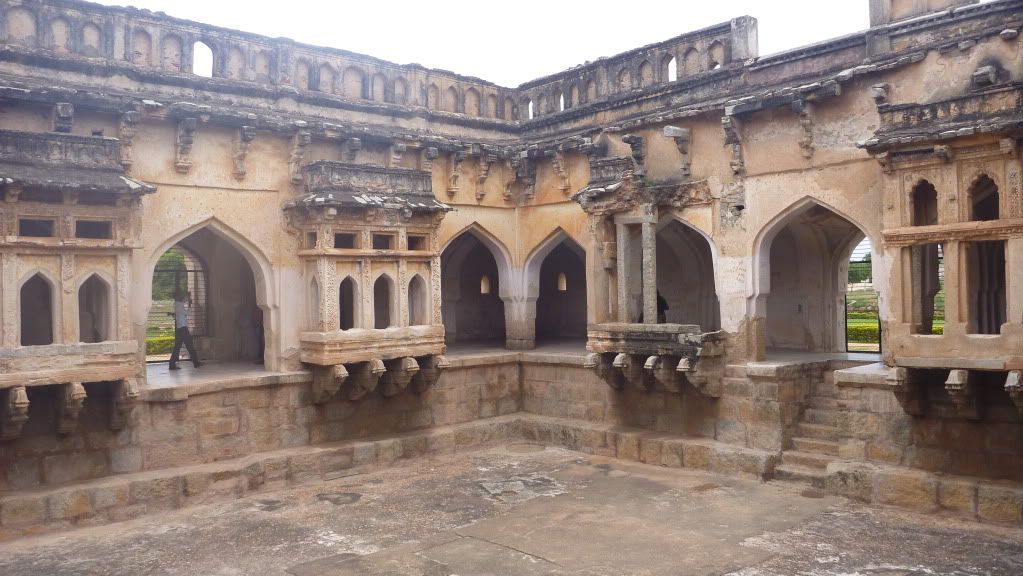
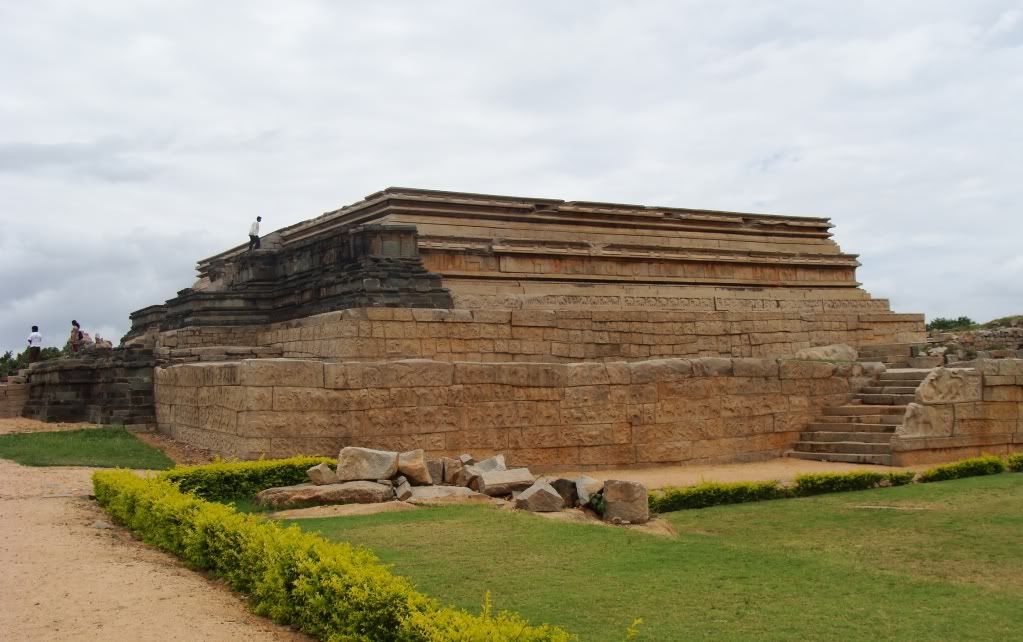

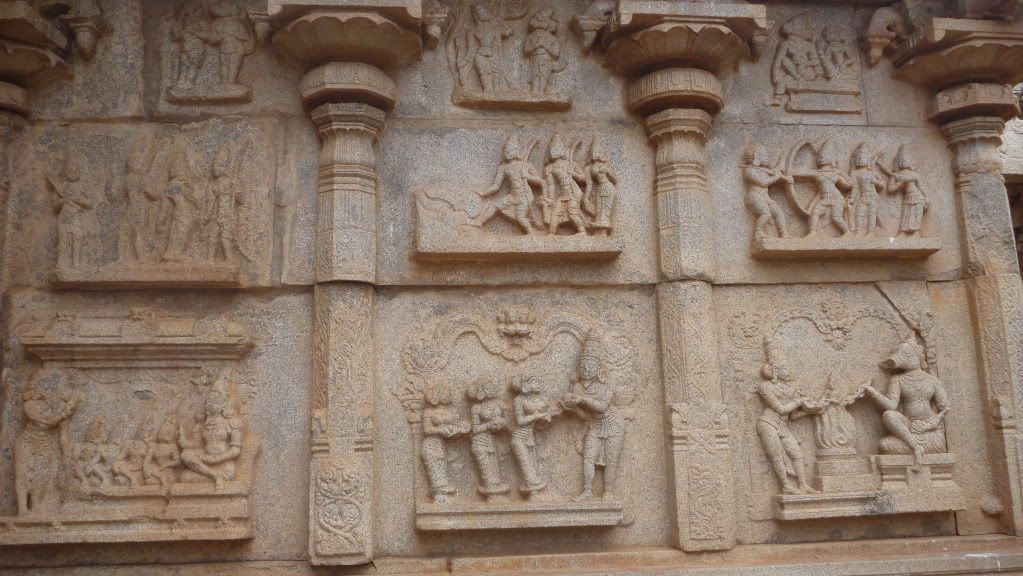
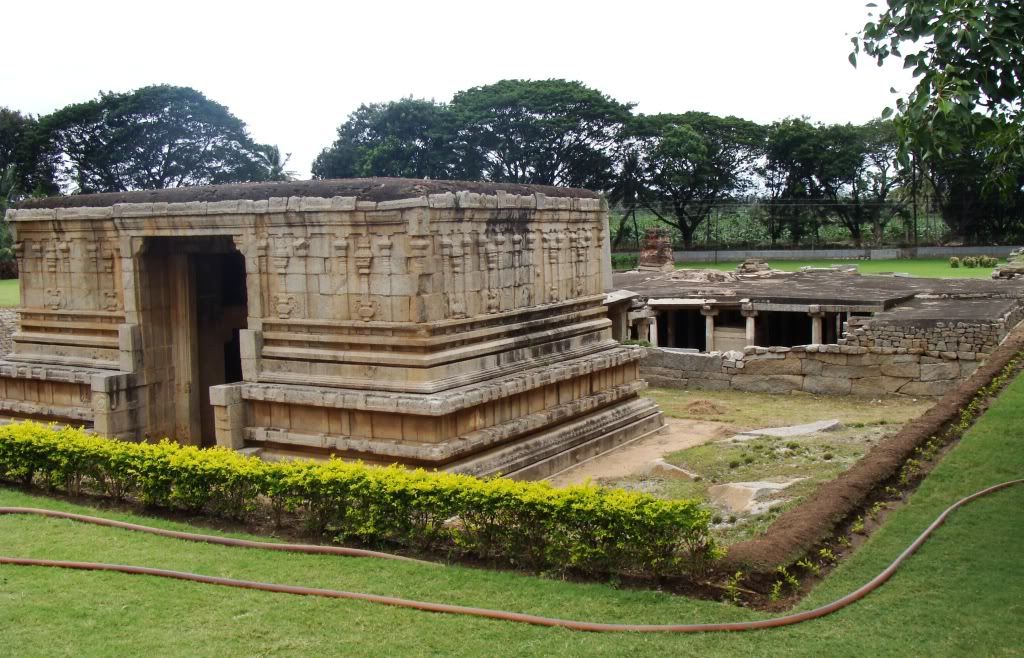


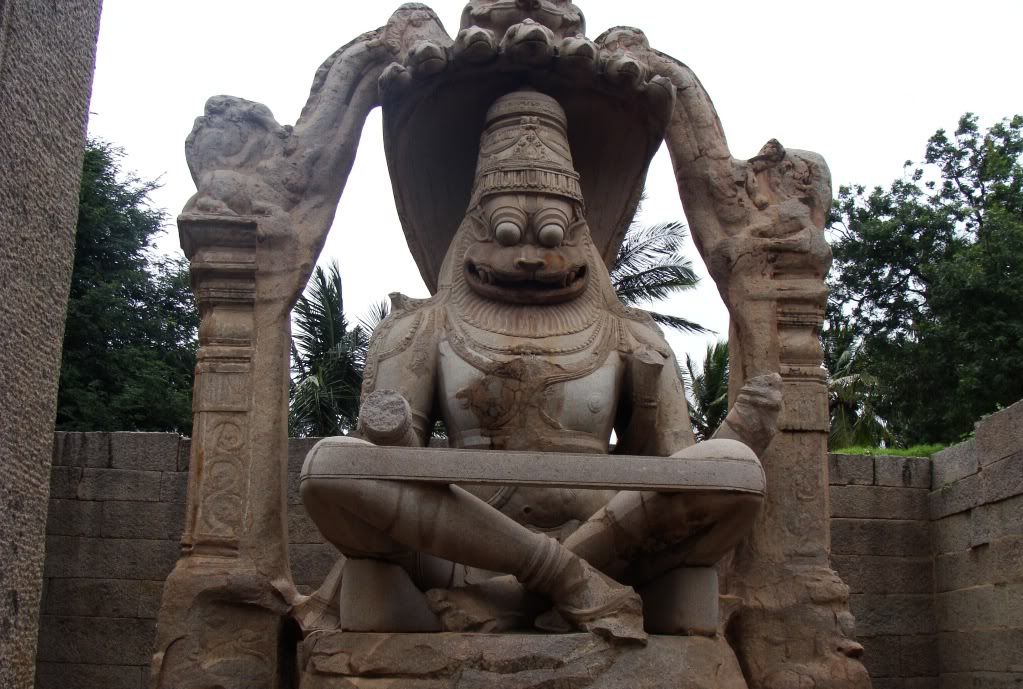
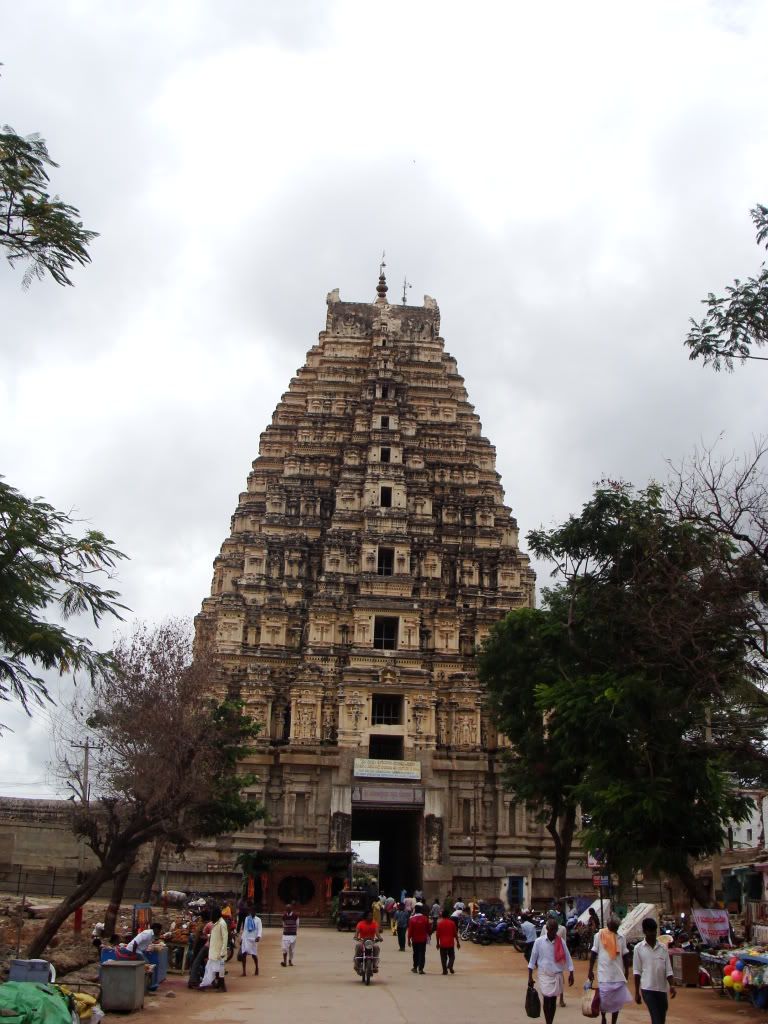
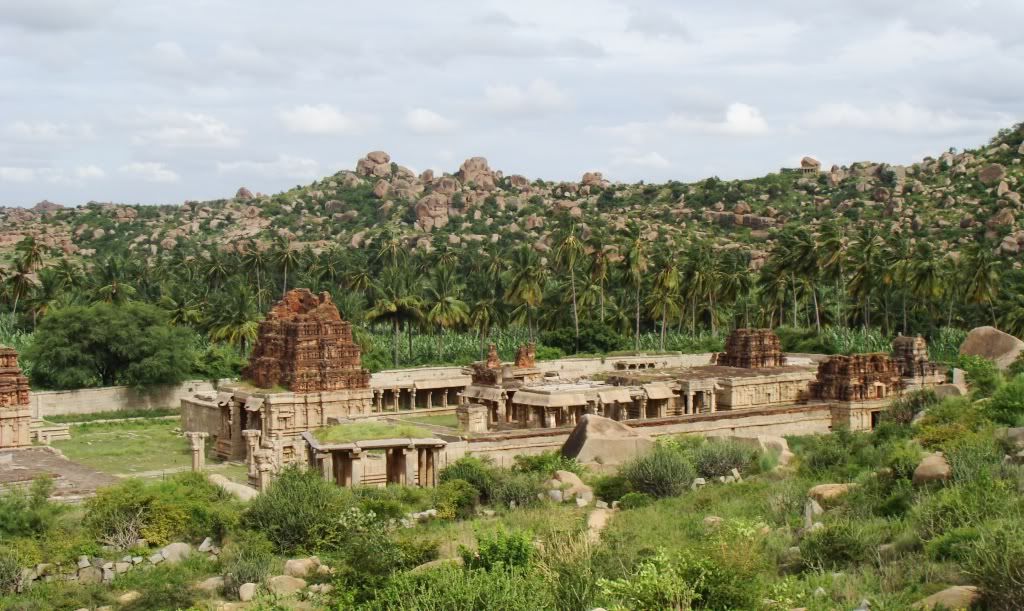
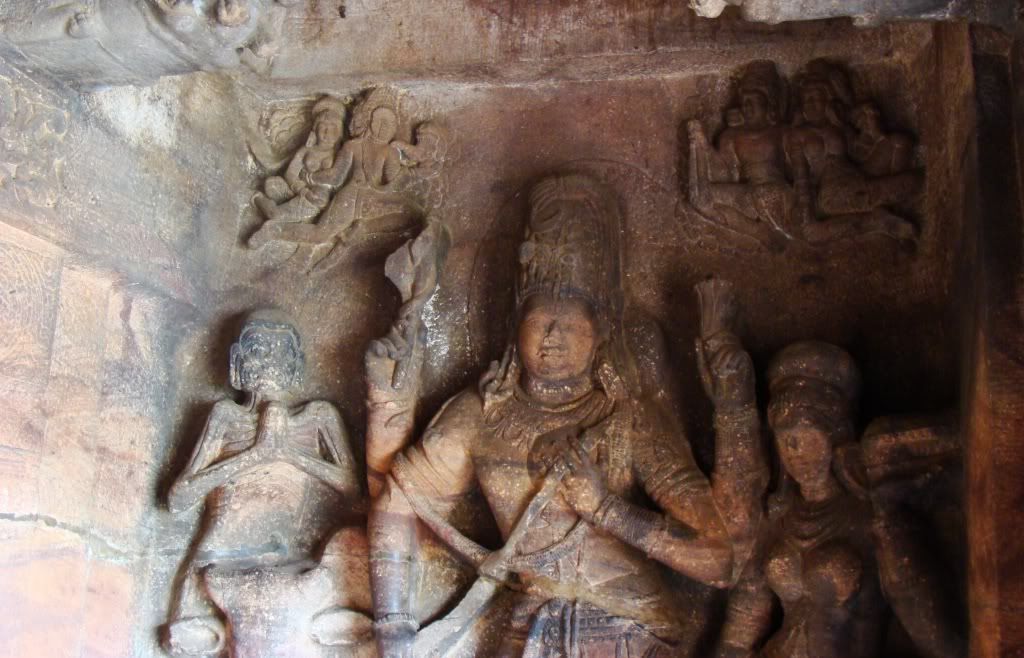



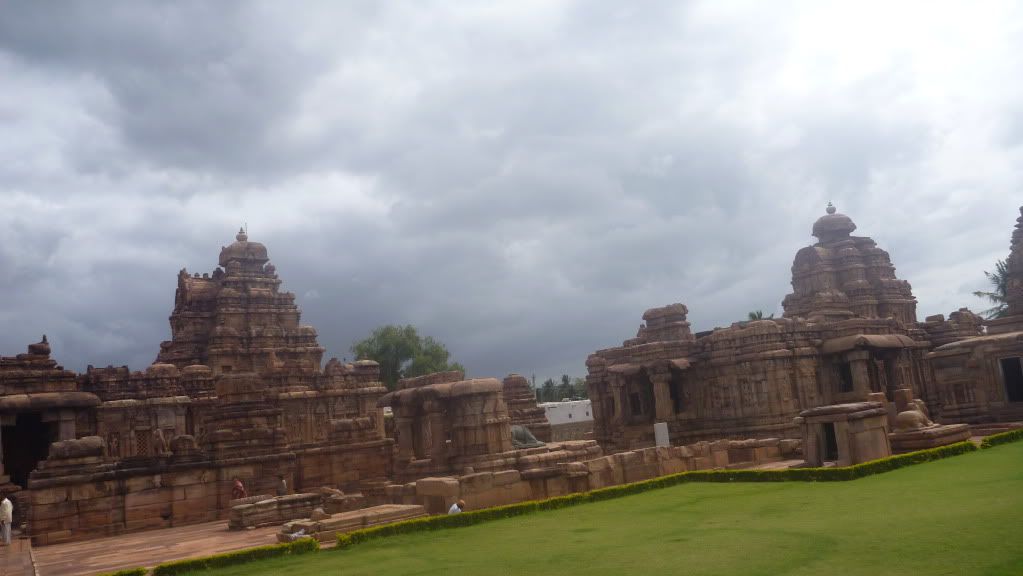
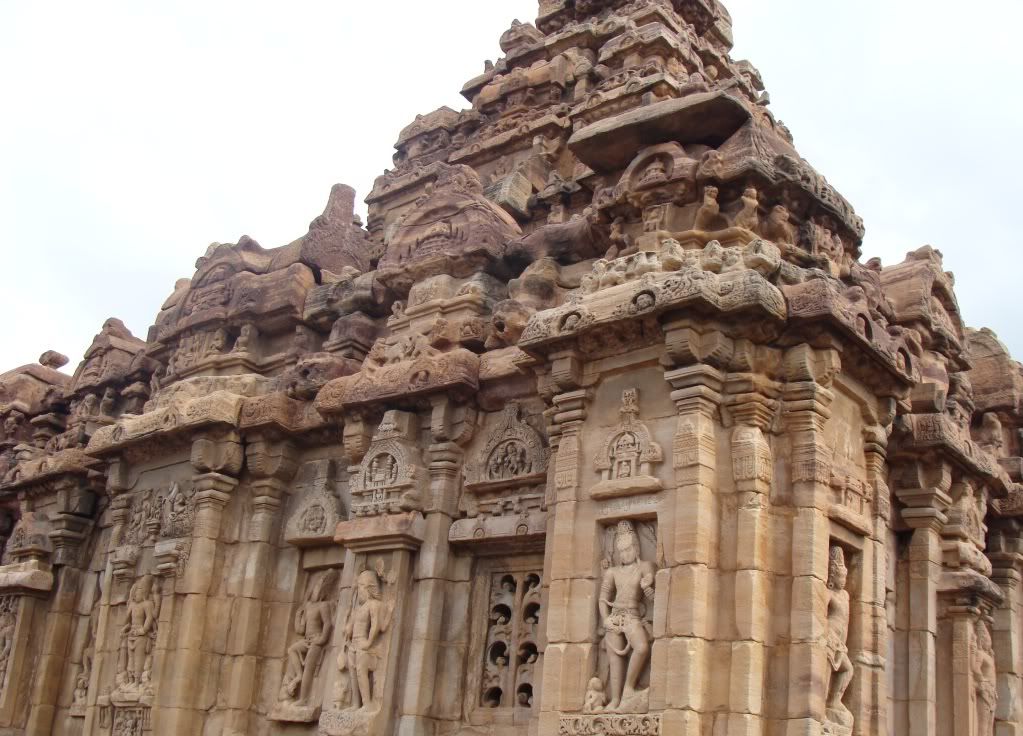
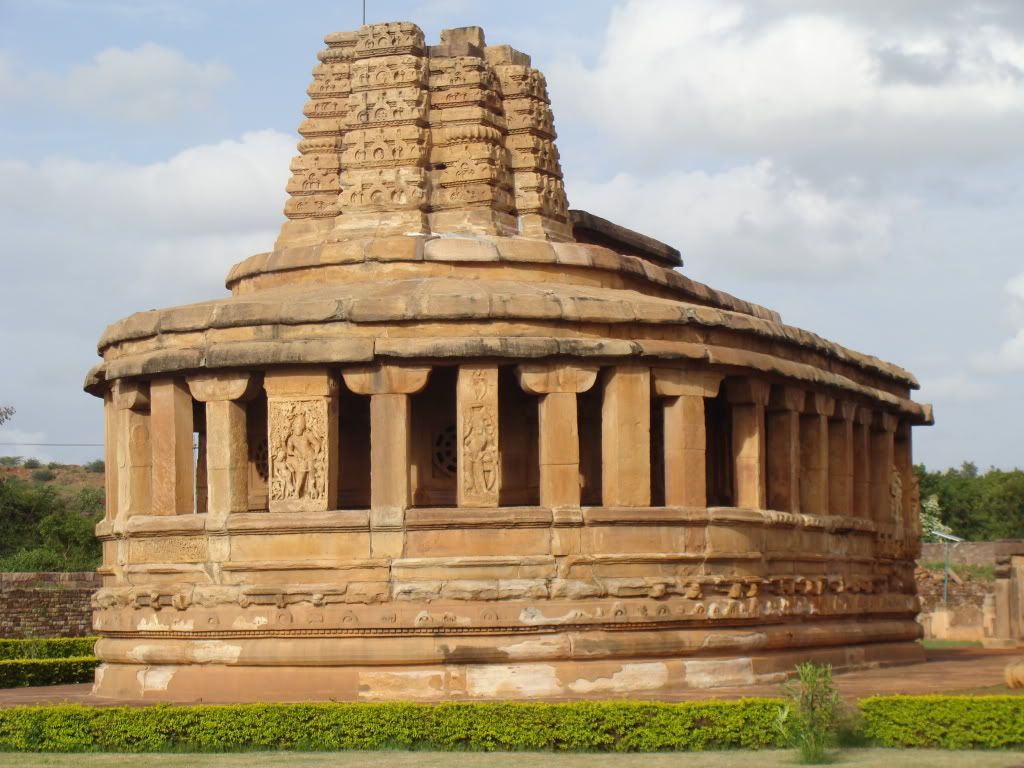

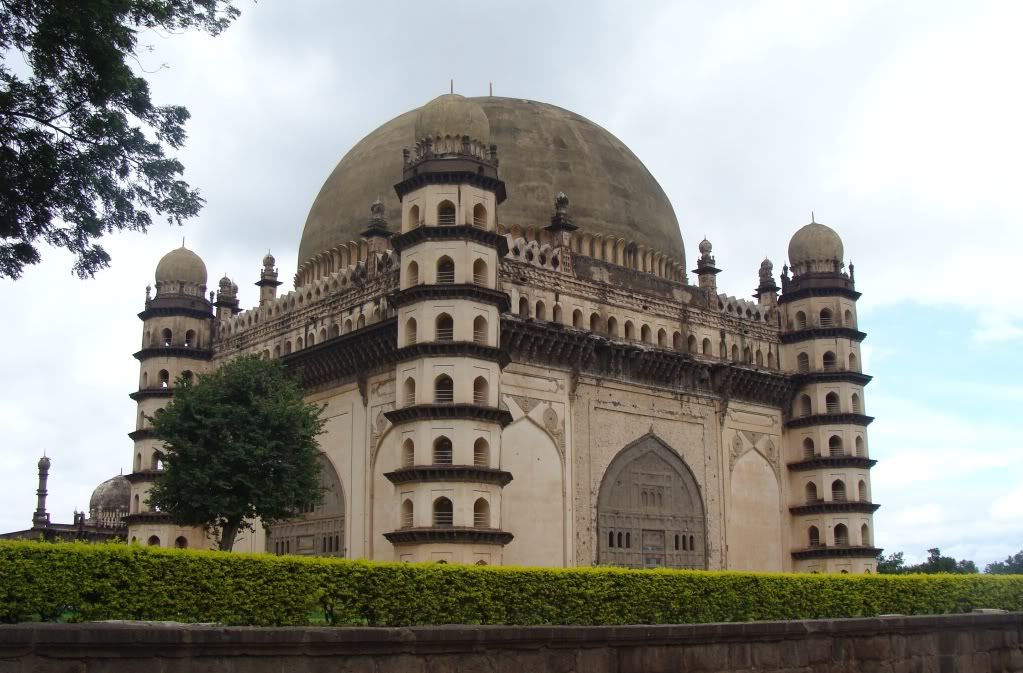
0 comments:
Post a Comment